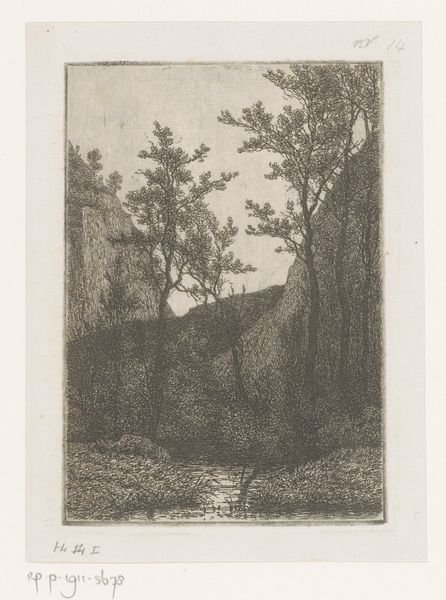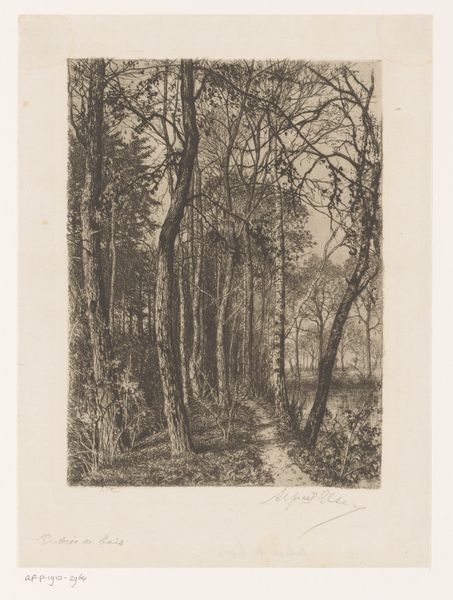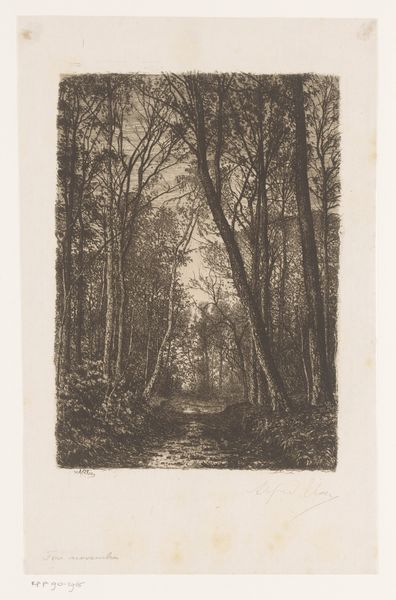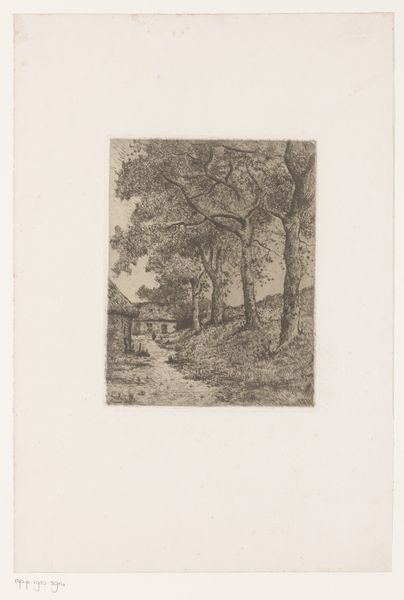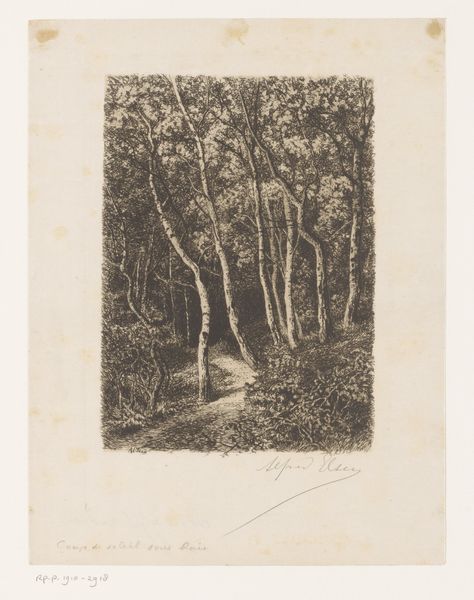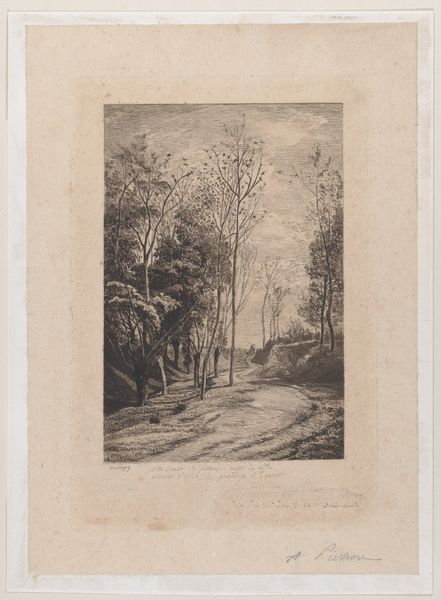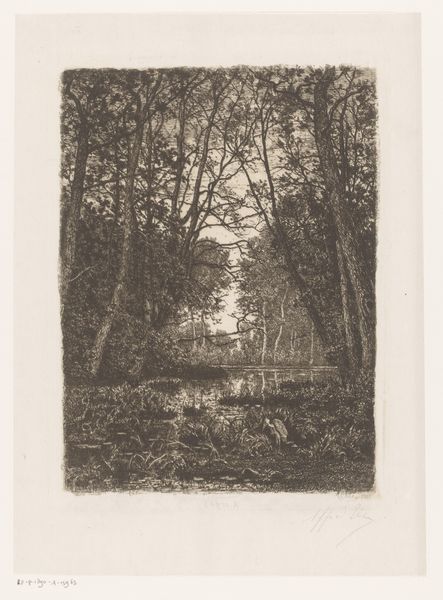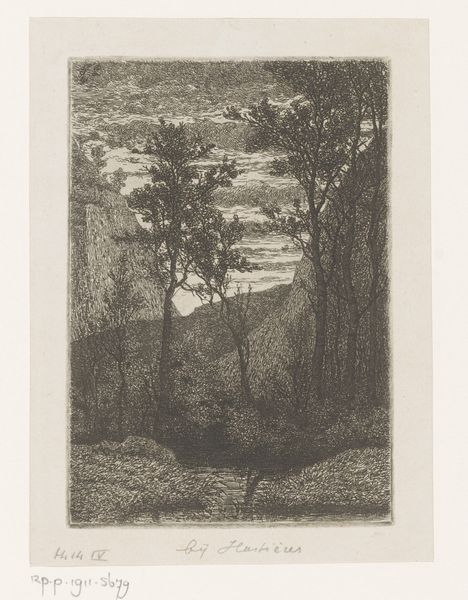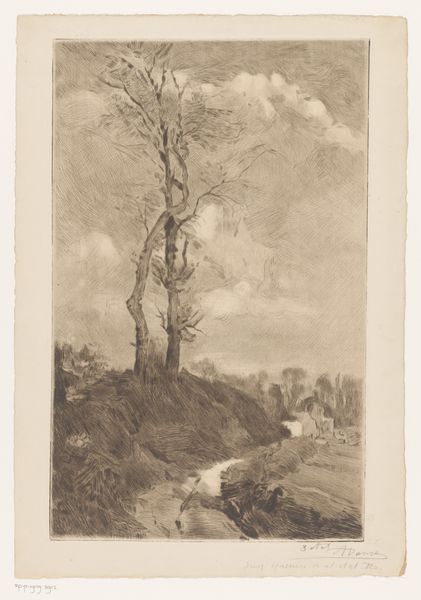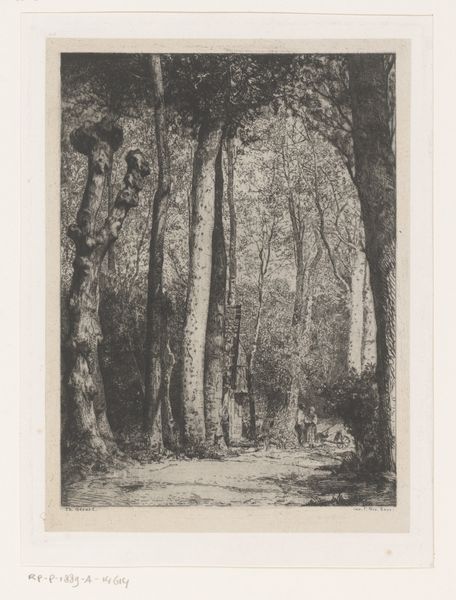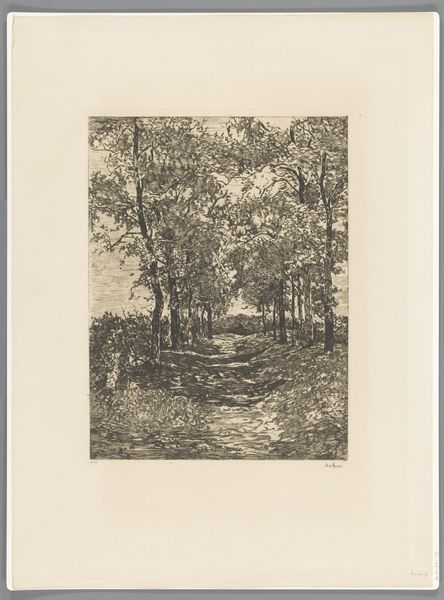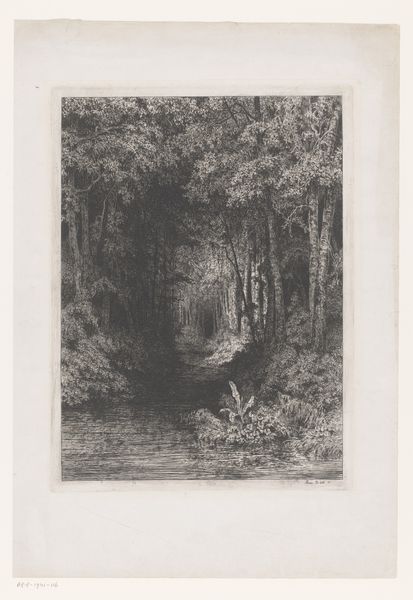
drawing, print, etching
#
drawing
# print
#
etching
#
landscape
#
forest
Dimensions: height 237 mm, width 179 mm
Copyright: Rijks Museum: Open Domain
Curator: This print, titled "Waterplas in een bos," which translates to "Pool in a forest," is by Emilie Rolin-Jacquemijns and dates sometime between 1852 and 1906. It's an etching, quite small in scale. What are your first impressions? Editor: It feels incredibly dense, almost claustrophobic. The details of the trees, reeds, and the water’s surface create a visual busyness. The process of creating such fine lines, layer upon layer, to arrive at this darkness... It’s almost exhausting to contemplate! Curator: The density really speaks to the period in which this print was made. Landscapes became incredibly popular, especially as industrialization encroached, artists looked to nature as this pure escape from the grime. These depictions are a kind of fantasy that denies much of contemporary society, in a sense. Editor: I'm interested in the physicality of that "escape." The artist wasn't just painting a pretty picture. Look at the materials: the plate, the acid, the precise application of the etching needle. These are all crucial to producing this feeling. The way the medium allowed Rolin-Jacquemijns to reproduce and distribute this image says a lot about what, or who, this space was actually for. A token of idealized leisure, reproduced by hand labor. Curator: Exactly! This particular imagery fed a demand, a hunger for these picturesque landscapes among certain sectors of society, further popularized through print media like this etching. Consider how access to such imagery was restricted to those with enough disposable income to purchase art in that period. Editor: And that's where the questions about class come into play. These forest scenes are being sold and consumed, becoming commodities themselves, almost ironically representing the "natural" as something one can own and display. Curator: It gives you something to think about. Rolin-Jacquemijns captures an essence here that tells of that time, that longing, its contradictions and its layered beauties. Editor: Definitely. Thinking about how this etching was made – the process, the intent – helps unlock these details for contemporary audiences, hopefully making people ask how visual culture reinforces or undermines power structures in our society today.
Comments
No comments
Be the first to comment and join the conversation on the ultimate creative platform.
